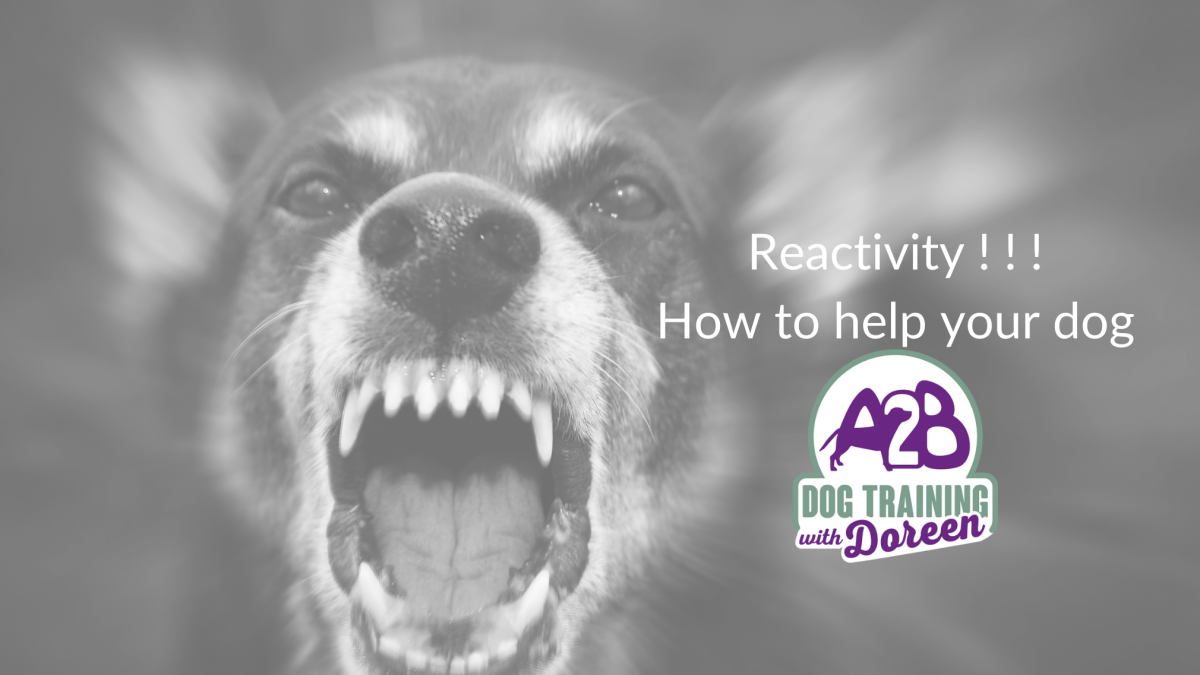WHY USING FOOD DOESN'T REWARD YOUR DOG'S UNWANTED BEHAVIOUR.

Giving food rewards ! are you not rewarding him for ..........
Barking
Lunging
Growling
Bad behaviour
??????
I have been asked this question many times, most recently for a behavioural case where the dog lunged and snapped at a delivery man. Using the methods below are really starting to show a positive effect. Certainly not a quick fix, but works by changing the dogs emotions, which in turn helps change the behaviour.
WHAT IS REACTIVITY ?
Reactivity is really just an OVER REACTION to a stimulus or trigger (see further down for an explanation of TRIGGER )
I know, I get where you're coming from………….
If I told you that your dog's reaction is out of their control, would you believe me ?
It certainly seems as If they know what they are doing!
Let's briefly talk about what happens when your dog feels stress.
It's all about hormones, specifically ADRENALINE and CORTISOL.
Your dog has no control over these hormones being released into their bloodstream.
“Right OK, but how can I stop them behaving that way”
Well, what kicks in the involuntary response is usually down to how your dog FEELS about his triggers.
WHAT ARE TRIGGERS?
“What do you mean TRIGGERS”
A trigger is just a word that means what (stimulus) makes your dog feel fearful, or anxious, or frustrated, or a combination of all three.
An example of a trigger could be a dog that is too close for comfort.
This (remember involuntary) your dog has no control) sets off the hormones to be released.
Your dog is getting ready for action around those things he feels scared or anxious, or even frustrated about.
So back to the headline.............
GIVING FOOD REWARD !
ARE YOU NOT REWARDING HIM FOR HIS ……..
Barking
Lunging
Growling
Bad behaviour
??????
No we are not rewarding him/her, we are changing their emotional response from a negative response to a positive response. No negative feelings equals no negative responses.
“So how do you do that then? “
BY USING DESENTISISATION AND COUNTER CONDITIONING METHODS.
These methods are also used for human therapy. Whether it is a fear of spiders, or a fear of heights.
Gradually exposing them to the source of their anxiety a little at a time, starting with low intensity exposure and gradually building up to full intensity or “the real deal.”
With dog's though, we cannot sit them down and have a chat about what we are doing. We can ask humans how they are feeling, and they can say whether they want to stop, or whether to push on.
How would you feel If I made you go to the top of that ladder or put you in a room of spiders ?
We never want our dog's to feel they have to tell us to stop (this would be when they overreact, or what we call, over threshold)
So as trainers we never want to send your dog over threshold.
 (4)61f2a8dc69b81_lg.png)
We want your dog's at threshold, where they have spotted their trigger, but can come away, or under threshold when there is no reaction at all.
 (2)61f2a964d6e9e_lg.png)
 (3)61f2a9ba2b7e1_lg.png)
"BUT WHY FOOD"
Well……..
By allowing your dog to observe their trigger under threshold (and providing them extra yummy treats at the same time), we’re changing their emotional state. Instead of escalating into a full-blown stress response – and be replaced with feelings of " Ok that is cool, doesn't bother me at all, what was the fuss about". That scary thing now means something good instead of scary.
With repetition, the presence of a trigger at that intensity will no longer cause even mild concern.
The trigger has now become a positive association i.e. good things happen when the trigger is there. Changing your dog's emotional response.
NOTE
This will not work if your dog is over threshold because your dog is already in his fight, flight, freeze mode. Dog's cannot learn in this head space.
This is where distance is your friend. Take a few steps back, try to offer a yummy treat, If your dog takes it nicely, then he has gone into his safe space.
If he snatches at the treat, you may still be too close.
The best distance is when your dog spots the trigger, but is still under threshold or at threshold to learn or you can distract your dog before 3 seconds has gone past.
Your dog is the one that decides and we have to listen to him to be able to help him change his emotional response.
EXTRA
This can also work with the dreaded postman/delivery driver.
If you need help and support for your struggles, please feel free to book a friendly call with me. I promise I will not bite :)
.
Categories: : Anxious/nervous dogs, Dog Behaviour, Reactivity
 Doreen Potter
Doreen Potter 